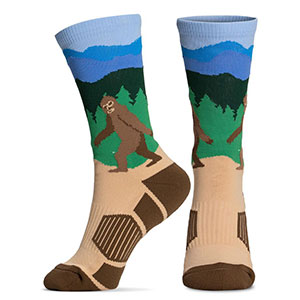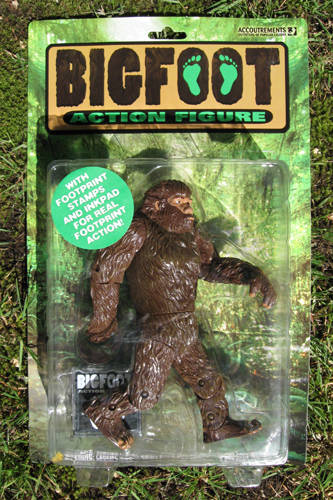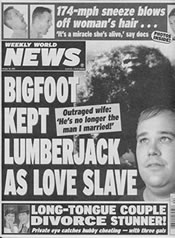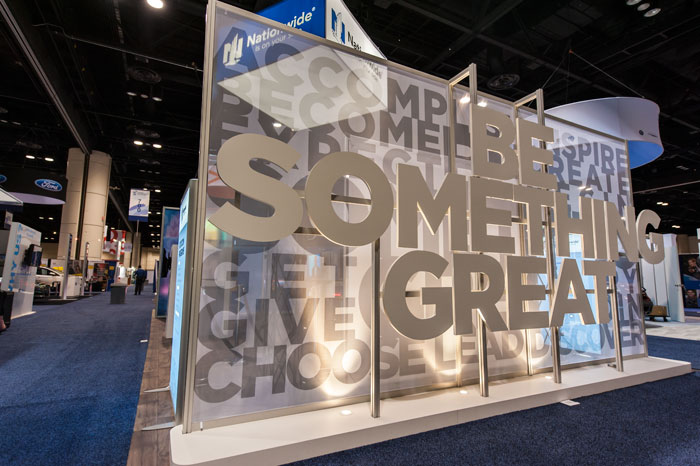
Trade Show Tips from Sasquatch
Sasquatch is no seven-foot dummy. He (she) has a brain to match that brawn. Bigfoot understands marketing, knows PR like a Madison Avenue insider, and can out Kardashian the Kardashians without taking a step outside the Pacific Northwest. Here’s what our ancestral brother from another mother can teach us about trade show marketing.
1. It’s Possible to be BIG and Still Not be Seen.
All too often, exhibitors are told that an island exhibit will get them more leads, more traffic, and more attention. But a poorly executed island with bland graphics and a confusing floor plan is much worse than a well-designed inline.
2. Mystery has Its Allure.
Bigfoot knows the benefits of the tease. Revealing teaser information before the show about a new product or service creates anticipation from customers and the press. Apple is the master of this technique. So is Bigfoot. Being coy with a well-crafted marketing campaign before the show has its benefits.
3. Tap into Your Followers.
You won’t see Sasquatch sending press releases or typing a Twitter message. His followers do all the work. They have websites, Facebook pages, and a television show that keeps our big hairy friend in the news. Occasionally, a rogue “fan” will damage the Bigfoot brand name with a silly stunt, but that’s an acceptable risk with any loosely organized group. Even then, the real followers rally around the brand and repair any damage.
4. Spend Your Marketing Money Wisely.
Technically, Bigfoot doesn’t spend any money, at least that we know. But that doesn’t prevent him from getting maximum exposure. He’s got a TV show (Finding Bigfoot) and a website (www.bfro.net). Your trade show marketing doesn’t have to be expensive. Planning is crucial. You can maximize your marketing by working with those who have a shared interest. For example, team up with other exhibitors on a prize that would be too expensive for one company, but not for five or six. Then create a theme or event that gives everyone more foot-traffic and exposure.
5. Training.
After all these years why hasn’t a Sasquatch been captured? Training. There are no unprepared Bigfoots. They know how to respond to nearly every situation, whether it’s a sudden encounter with Boy Scouts or a deer hunter. Exhibitors who “arrive” at their booth without adequate training and who do not know how to respond to most show floor situations will fail. Unfortunately, it’s the most controllable part of any trade show marketing program . . . and most exhibitors simply “wing it.”
6. Leave Your Mark.
What’s the point of participating in a trade show if you don’t leave your mark? Bigfoot routinely leaves the big three: foot prints, hair, and scat. It shows he’s been there and people take notice. No one is advising you to leave the “big three” at your next show, but making a lasting impression is critical to your company’s success. Is your message clear? Does it show how your company can solve a potential client’s problem? How do you engage the attendees in the booth? And, finally, are you following up on all leads after the show?
7. Smells that Linger.
Bigfoot sightings often include a description of an unpleasant acrid or skunky odor. That’s not good, but no one expects our tall friend to bathe with Irish Spring. You, on the other hand, should do the following:
- Clean that suit, sport coat, or jacket once in awhile. Just because it doesn’t look dirty doesn’t mean it doesn’t reek of B.O., Subway $5 foot-longs, and Vegas casinos.
- Coffee Breath. No one’s telling you not to have a latte, cappuccino, or Dunkin’ in the morning. Drink away. But for goodness sake, don’t assume that your breath will smell like rose petals after five cups. Free Tip: Breath mints are every exhibitor’s best friend. Take several. Rinse and repeat.
- Perfume and Cologne. We aren’t living in 17th Century France where the aristocracy used fragrances to mask bad hygiene and a fear of bathing. If you insist on smelling like Jennifer (A or L), Antonio, Beyonce, Britney, or Paris, a little goes a long, long way.
8. Family.

How often do you hear of Bigfoot sightings where the dad, mom, and kids are strolling through the woods or frolicking in a stream? Never. Being Bigfoot is serious work and families can be a distraction. No one is telling you not to bring your family to the industry trade show. After all, it’s in Las Vegas or Orlando or San Francisco. If you are serious about maximizing your trade show investment, you already know that trade shows are not a vacation. Not only are you on your feet at the show all day, but there’s also meetings before and after the show with suppliers, clients, and coworkers. There’s the pressure of responding to emails and calls while away from the office. And nearly every show has non-stop educational and social events.
9. The Brand is Important.
You already know this, but occasionally, marketing managers think they can treat branding at a trade show the same as branding in a magazine ad. 3D marketing has a unique set of challenges which only advice or experience can teach you. Rely on your local trade show professional to guide you. You’ll save money, time, and headaches. There’s a reason the Lock Ness Monster is no longer in the news. Poor branding. That’s not a mistake Sasquatch ever plans to make.
Learn from the big guy and you too can maximize your trade show marketing potential.
Please share your comments.
–Mel White
http://www.linkedin.com/in/melmwhite
mel@classicexhibits.com
*********************************
Based in Portland, Oregon, Classic Exhibits Inc. designs and manufacturers portable, modular, and custom-hybrid exhibit solutions. Classic Exhibits products are represented by an extensive distributor network in North America and in select International markets. For more information, contact us at 866-652-2100 or www.classicexhibits.com.









